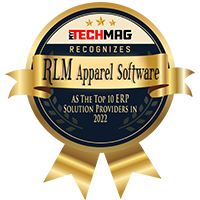In today’s digitalized world, companies are progressively building up an enterprise-wide capability to innovation that is dispersed across different specialty units. Some have already formed enterprise architecture (EA) standards to provide the most extensive compatibility of information technology (IT) components and incorporation of several data and applications.
This standardization is capable of lessening the risks associated with an unrestrained technology portfolio, letting easy management of software licensing and security. All in all, IT divisions deal with countless programming parts that possibly embody a threat to the association.
Agile developments, alongside mergers and acquisitions, have made it complicated for this department to track the changes and the technologies used by their team or an organization as a whole. Some of such common challenges faced by IT departments are uncovered below:
Globalization Affecting the Technology
While globalization is excellent for business as it extends opportunities for markets that were previously closed and permits the sharing of ideas and information across different platforms, it could threaten the budgetary plans of SMBs. Investments in licensing, infrastructure, and global solutions, in general, hit this segment harshly.
Lack of Talent Pool
This problem is primarily limited to the technology segment. Around half of employees lack the critical thinking skills that would qualify them to grow further in this field. The IT team faced the most significant hurdle so far is having members that aren’t smart enough to put a general hardware and software security environment cost-effectively.
IT Policy Compliance Failure
Specific technologies used by IT projects don’t comply with the policy rules as defined by their departments. IT departments are sometimes unaware of techniques used by their teams and business stakeholders, increasing the risk of uncontrolled data flows and non-compliance. Besides, these technologies are sometimes incompatible with the existing portfolio. This increases IT debt, primarily if technology standards are not enforced.
Increased Cyber Security Risks
The use of incompatible technologies or old ones will undoubtedly increase the IT risks, resulting in a large number of security breaches. The tech components that are not monitored or updated on a regular basis will lead to significant consequences in the future. Mainly, small businesses are at risk for cyber threats since more than 43% of attacks are aimed at them, whereas only 14% of them are capable of handling it.
Enterprise Architecture helps resolve this Issue with IT Standards
Enterprise architects (EA) can seamlessly resolve this issue by streamlining various technologies, gaining control over the IT portfolio, and ensuring stakeholders utilize approved inventory technologies.
1. Inventory Technologies
Inventory technologies help EAs learn the existing scenario about the technologies used in their establishments. They retrieve the information from CMDBs to complete this task at the earliest. Moreover, they leverage external software libraries to collate lifecycles and complete the inventory.
The latest technologies requested by the architects, local project teams, developers, or any organization members, which are not yet standardized or in production, should also be added in this technology inventory. Once done, they usually tie these technologies to multiple projects and applications that are linked to their supported business capabilities. With this mapping, EAs can clearly comprehend the influence of any technology on any business.
2. Pooled Technology Status
After defining the status of technology, EAs can quickly share this information with the stakeholders ensuring that they avoid the usage of rejected technologies. The information can be shared using tools or portals accessible to the whole organization and by the development teams and industry stakeholders. The details of technology status are defined below in this article.
3. Project Retirement or Postal
Enterprise architects build projects that are known to determine the reason behind removing or updating technology, alongside costs, resources, and timeline in order to streamline the portfolio. After this procedure, they prioritize the projects based on several other criteria, such as business impression and tactical arrangement.
Once it’s prioritized, enterprise architects follow the execution until the completion of the project. This critical step helps team members in the IT departments update and remove certain technologies from the portfolio based on the recommendations by EA.
Parameters to Assess Technology Standards
Being an enterprise architect, they are responsible for choosing the technologies that can be assessed as standards. This is generally picked based on the specific requests made by the development team and stakeholders like risk managers and architects. This selection could also include the evaluation of the existing inventory.
In order to assess the technologies used by the IT department, one can consider several parameters such as business capabilities, vendor dependency, supported applications, and lifecycles. However, at the same time, as the technology passes through the various stages of the lifecycle, the EAs are also responsible for updating its status as given below:
- Envisioning: According to this status, the technology used by the organization is currently assessed for future purposes.
- Emerging: This status is for the technology that is still in its early days of knowledge, and not yet fully deployed.
- Confirmed: In this case, the technology is available as a whole, and the team members have known it well.
- Obsolete: The technology is considered to be in an obsolete state if it’s outdated and poses a risk to the organization. Such technologies must be replaced or removed quickly.
When they complete the evaluation, they can rapidly choose if the innovations go along or not with the organization’s standards.
- Approved: The technologies are considered to be approved if they are recognized as an approved standard and expected to be used further by the IT department.
- Rejected: It is used for rejected standards, where the software components are proven to unfollow the company policy.
- Permitted: This status is utilized for technologies that are allowed to be used by the team. It must be noted that these technologies may come with certain restrictions. For instance, the requirement of training prior to use, or additional support for its smooth execution.
Conclusion
Organizations are obliged to deliver products faster in today’s modernized world but in a most agile manner. However, enterprise architects can help companies in this aspect by defining IT standards. They can help firms in decreasing the cost and the number of technologies used while ensuring projects comply with the guidelines. With limited technologies, employees can be better trained, thereby improving their talent overall.







